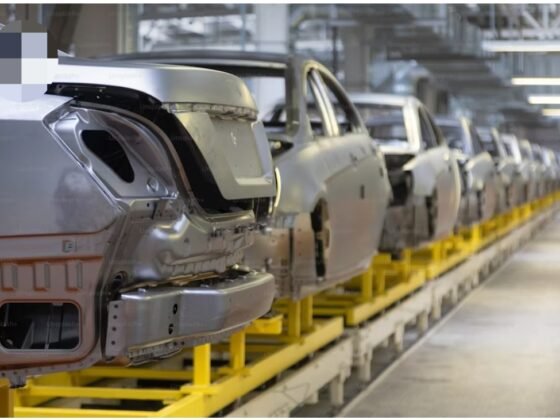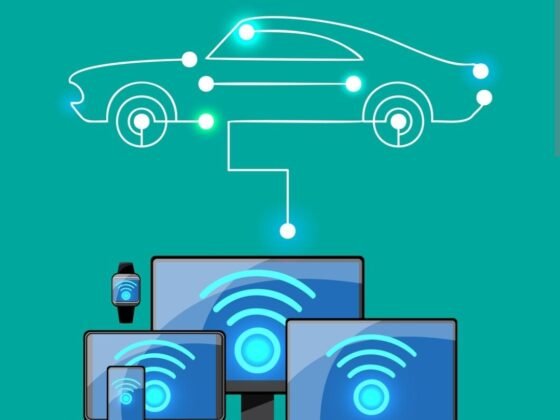The automotive industry has witnessed a seismic shift over the past decade, driven by advancements in technology and evolving consumer demands. Among the pivotal innovations is the concept of “automotive link,” a term encompassing various technologies and systems that connect vehicles to the digital world. From in-car connectivity to telematics, automotive link technology has transformed how drivers interact with their vehicles and the broader ecosystem. This article explores the essence of automotive link, its benefits, and its implications for the future of transportation.
Understanding Automotive Link Technology
At its core, automotive link refers to the integration of connectivity solutions within vehicles. It encompasses features such as:
- In-Vehicle Infotainment Systems (IVI): These systems provide seamless access to navigation, entertainment, and communication tools, allowing drivers and passengers to stay connected while on the move.
- Telematics Systems: These systems monitor vehicle performance, driver behavior, and provide real-time diagnostics, enhancing safety and efficiency.
- Connected Car Features: These include remote vehicle control, over-the-air updates, and integration with smart home devices.
These technologies work through embedded systems or smartphone mirroring, using advanced communication protocols like Bluetooth, Wi-Fi, and cellular networks.
Benefits of Automotive Link Technology
The automotive link has revolutionized the driving experience, offering numerous advantages:
1. Enhanced Safety Features
Modern vehicles equipped with automotive link systems come with advanced safety features such as automatic collision notifications, emergency call systems, and remote diagnostics. These technologies not only enhance driver safety but also aid first responders in emergencies.
2. Convenience and Comfort
Automotive link technology has made life easier for drivers. Features like remote start, climate control, and keyless entry are now accessible through smartphone apps. Drivers can also locate their vehicles, check fuel levels, and even schedule maintenance remotely.
3. Improved Navigation and Traffic Management
Real-time traffic updates, predictive routing, and integration with map applications ensure smoother navigation. Automotive link systems also help reduce congestion by providing alternative routes, contributing to efficient urban mobility.
4. Fuel Efficiency and Cost Savings
Telematics systems monitor fuel consumption and driving habits, providing insights that help reduce fuel costs. Fleet managers, for instance, can optimize routes and schedules to maximize efficiency.
5. Seamless Entertainment
With in-car entertainment systems, passengers can stream music, access apps, and enjoy multimedia content, making long journeys more enjoyable. These systems are especially beneficial for families with young children.
Applications in the Automotive Industry
The impact of automotive link technology spans multiple sectors within the automotive industry:
1. Autonomous Vehicles
Automotive link plays a crucial role in the development of autonomous vehicles. Real-time data sharing between vehicles and infrastructure ensures precise navigation, collision avoidance, and efficient traffic management.
2. Ride-Sharing Services
Companies like Uber and Lyft rely heavily on automotive link systems for vehicle tracking, navigation, and driver-passenger communication. These technologies have enhanced the efficiency and reliability of ride-sharing services.
3. Fleet Management
Fleet operators benefit significantly from automotive link technologies. Telematics systems provide data on vehicle location, fuel usage, and maintenance schedules, helping reduce operational costs and downtime.
4. Electric Vehicles (EVs)
In electric vehicles, automotive link systems enable features like battery monitoring, charging station integration, and remote climate control. These innovations enhance the overall EV ownership experience.
Challenges in Implementing Automotive Link Technology
Despite its numerous advantages, the adoption of automotive link technology faces several hurdles:
1. Data Security and Privacy Concerns
As vehicles become increasingly connected, they are vulnerable to cyberattacks. Protecting sensitive data and ensuring secure communication between systems is a significant challenge for manufacturers.
2. Compatibility Issues
Not all vehicles and devices are compatible with automotive link systems. This lack of standardization can limit accessibility for some users.
3. High Costs
The integration of advanced connectivity features can increase vehicle costs, making them less affordable for some consumers.
4. Technological Dependence
While automotive link systems enhance convenience, they may also lead to over-reliance on technology, potentially diminishing traditional driving skills.
The Future of Automotive Link Technology
The future of automotive link technology is promising, with continuous advancements in Artificial Intelligence (AI), 5G connectivity, and the Internet of Things (IoT). Here’s what lies ahead:
1. Vehicle-to-Everything (V2X) Communication
V2X technology will enable vehicles to communicate with other vehicles, infrastructure, and pedestrians, paving the way for smart cities and reducing traffic accidents.
2. Advanced Driver Assistance Systems (ADAS)
ADAS features like lane-keeping assist, adaptive cruise control, and parking assist will become more sophisticated, offering a semi-autonomous driving experience.
3. Personalized Driving Experiences
AI-driven automotive link systems will provide personalized suggestions based on driver preferences, such as recommended routes, entertainment options, and vehicle settings.
4. Greater Integration with Smart Ecosystems
Future vehicles will seamlessly integrate with smart homes, allowing drivers to control home appliances, monitor security cameras, and even manage grocery lists from their car dashboards.
Conclusion
Automotive link technology represents a significant leap forward in the evolution of transportation. By merging vehicles with the digital world, it has enhanced safety, convenience, and efficiency for drivers and passengers alike. As technology continues to advance, the potential for innovation within the automotive link ecosystem is limitless. However, addressing challenges such as data security and affordability will be crucial in ensuring its widespread adoption.
Ultimately, the automotive link is not just about connecting cars; it’s about creating a holistic driving experience that aligns with the demands of the modern, tech-savvy world. Whether you’re a daily commuter, a fleet manager, or an automotive enthusiast, the benefits of this technology are undeniable, promising a smarter and more connected future on the road.










